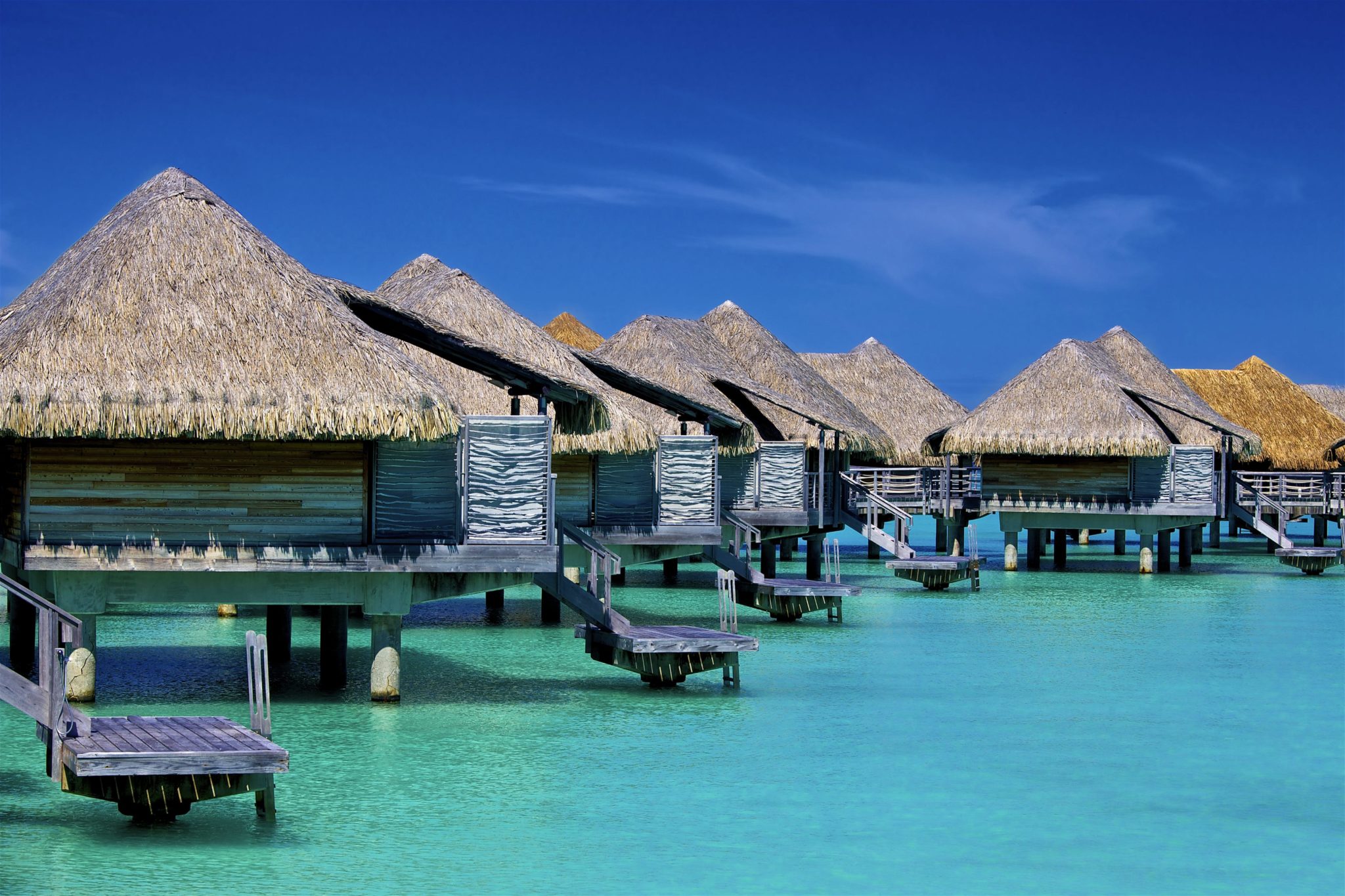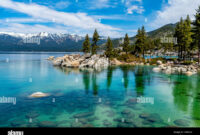Top vacation destinations in the world sets the stage for an exploration of idyllic escapes and unforgettable experiences. This journey delves into the factors that elevate certain locations to coveted status, considering diverse traveler preferences and the unique offerings of various global hotspots. From breathtaking landscapes and vibrant cultures to thrilling adventures and serene retreats, we’ll uncover what makes these destinations truly exceptional.
We’ll examine ranking methodologies, geographical influences, and the types of experiences available, all while emphasizing sustainable and responsible tourism practices. Ultimately, our aim is to equip you with the knowledge to plan your own perfect getaway, whether you crave adrenaline-pumping activities or tranquil relaxation.
Defining “Top” Vacation Destinations
Defining a “top” vacation destination is inherently subjective, influenced by a complex interplay of factors that cater to the diverse needs and preferences of global travelers. There’s no single, universally accepted metric for determining the best destinations; rather, a confluence of elements contributes to a location’s ranking.
Factors Contributing to a Destination’s Ranking
Several key factors contribute significantly to a destination’s ranking as a “top” vacation spot. These include, but are not limited to, natural beauty and unique landscapes, cultural richness and historical significance, availability of diverse activities and attractions, safety and security, accessibility and infrastructure, cost and affordability, and the overall quality of service and hospitality provided. A destination excelling in several of these areas is more likely to receive high rankings. For example, the Maldives consistently ranks highly due to its stunning beaches, luxurious resorts, and relative safety, while destinations like Kyoto, Japan, attract travelers with their rich cultural heritage and historical sites. Conversely, a destination might be hampered by poor infrastructure or safety concerns, despite possessing other desirable attributes.
Traveler Preferences and Their Influence
Different types of travelers prioritize different aspects of a vacation. Adventure travelers might prioritize destinations offering challenging hikes, extreme sports, or wildlife encounters, such as Nepal for trekking or Costa Rica for eco-tourism. Luxury travelers, on the other hand, focus on high-end accommodations, exclusive experiences, and personalized service, favoring destinations like the Seychelles or Bora Bora. Budget travelers prioritize affordability and value, seeking destinations with low costs of living and accessible activities, such as Southeast Asia or certain regions of South America. Family travelers seek destinations with child-friendly amenities, attractions, and activities, often preferring destinations with theme parks, beaches, or family-oriented resorts. Finally, cultural travelers are drawn to destinations rich in history, art, and local traditions, such as Italy or Peru. Understanding these diverse preferences is crucial in evaluating a destination’s appeal to different market segments.
A Rubric for Evaluating Vacation Destinations
A comprehensive evaluation of vacation destinations requires a multi-faceted approach. The following rubric provides a framework for assessing various criteria:
| Criterion | Excellent (5 points) | Good (4 points) | Fair (3 points) | Poor (2 points) | Unacceptable (1 point) |
|---|---|---|---|---|---|
| Natural Beauty | Stunning landscapes, pristine environment | Attractive scenery, well-maintained areas | Average scenery, some environmental concerns | Unattractive scenery, significant environmental damage | Severely damaged environment, unattractive |
| Cultural Richness | Rich history, diverse culture, many attractions | Interesting culture and history, several attractions | Some cultural aspects, few attractions | Limited cultural significance, few attractions | Lack of cultural interest or attractions |
| Activities & Attractions | Wide variety of activities for all interests | Good selection of activities and attractions | Limited choices of activities and attractions | Few activities and attractions available | Very few or no activities and attractions |
| Safety & Security | Very safe and secure environment | Generally safe, minor security concerns | Some safety concerns, moderate security risks | Significant safety concerns, high security risks | Unsafe and insecure environment |
| Accessibility & Infrastructure | Excellent transportation, modern infrastructure | Good transportation, adequate infrastructure | Limited transportation options, basic infrastructure | Poor transportation, inadequate infrastructure | Very limited or no transportation, severely lacking infrastructure |
| Cost & Affordability | Highly affordable, good value for money | Reasonably priced, good value for many | Moderate costs, some value concerns | Expensive, poor value for money | Extremely expensive, very poor value |
| Service & Hospitality | Exceptional service, warm hospitality | Good service, friendly hospitality | Average service, adequate hospitality | Poor service, unfriendly hospitality | Very poor service, inhospitable environment |
Each criterion is scored from 1 to 5, allowing for a comprehensive assessment. The total score provides a relative ranking of destinations.
Comparative Analysis of Ranking Methodologies
Various travel publications and websites employ different methodologies for ranking vacation destinations. Some prioritize user reviews and ratings, while others rely on expert opinions or a combination of factors. For instance, TripAdvisor primarily utilizes user reviews and ratings, potentially leading to rankings influenced by subjective experiences and biases. Conversely, publications like Condé Nast Traveler may incorporate expert assessments and editorial choices, potentially introducing a degree of editorial bias. These differing methodologies lead to variations in destination rankings across different platforms. Understanding the strengths and limitations of each methodology is crucial in interpreting published rankings. For example, a destination might rank highly on TripAdvisor due to positive user reviews but score lower on a publication that weighs factors like infrastructure and sustainability more heavily.
Geographical Distribution of Top Destinations
The global distribution of popular vacation destinations reveals fascinating patterns influenced by diverse geographical factors, cultural heritage, and accessibility. Understanding this distribution provides valuable insight into tourism trends and the impact of environmental and infrastructural elements on travel choices. Analyzing destinations by continent highlights the unique appeal of each region.
Top Destinations by Continent
The world’s top vacation destinations are spread across various continents, each offering unique experiences. Climate, landscape, and cultural heritage significantly shape the appeal of these locations. Accessibility, in terms of infrastructure and transportation links, also plays a crucial role in determining their popularity.
- Asia: Boasting a rich tapestry of cultures and landscapes, Asia attracts millions annually. From the bustling markets of Bangkok, Thailand, known for its ornate temples and vibrant street life, to the serene beauty of the Himalayas in Nepal, offering breathtaking trekking opportunities, and the historical wonders of Kyoto, Japan, with its traditional gardens and ancient temples, Asia caters to a wide range of interests. The diverse climate, ranging from tropical beaches to snow-capped mountains, contributes significantly to its appeal.
- Europe: A continent steeped in history and culture, Europe offers a diverse range of experiences. Iconic landmarks like the Eiffel Tower in Paris, France, and the Colosseum in Rome, Italy, attract large numbers of visitors. The picturesque canals of Venice, Italy, and the charming streets of Amsterdam, Netherlands, provide unique cultural experiences. Europe’s relatively well-developed infrastructure and accessibility make it a popular choice for travelers.
- North America: North America offers a blend of natural wonders and vibrant cities. National parks like Yellowstone and Yosemite in the United States attract nature enthusiasts, while bustling metropolises such as New York City and Los Angeles offer a diverse range of entertainment and cultural attractions. The varied climate, from the snowy peaks of the Rockies to the sunny beaches of California, contributes to the continent’s appeal. Excellent infrastructure and accessibility further enhance its popularity.
- South America: South America is known for its stunning natural landscapes, from the Amazon rainforest to the Andes Mountains. Destinations like Machu Picchu in Peru, a breathtaking Inca citadel, and Rio de Janeiro in Brazil, famous for its beaches and Christ the Redeemer statue, attract visitors seeking adventure and cultural immersion. The region’s diverse climate and stunning scenery, combined with a growing tourism infrastructure, are driving factors in its increasing popularity.
- Africa: Africa offers a unique blend of wildlife safaris, ancient civilizations, and stunning natural beauty. Destinations like the Serengeti National Park in Tanzania, known for its abundant wildlife, and the pyramids of Giza in Egypt, ancient wonders of the world, attract millions of visitors each year. While infrastructure varies across the continent, efforts are being made to improve accessibility and promote sustainable tourism practices.
- Oceania: Oceania is renowned for its stunning beaches, coral reefs, and unique cultures. Destinations like the Great Barrier Reef in Australia, a world-renowned natural wonder, and the islands of Fiji, known for their pristine beaches and luxurious resorts, attract travelers seeking relaxation and adventure. The region’s warm climate and stunning natural beauty contribute to its popularity, although accessibility can be a factor depending on the specific location.
- Antarctica: While not a traditional vacation destination for the masses, Antarctica offers a unique and increasingly popular experience for adventurous travelers. The extreme climate and remote location present challenges, but the unparalleled beauty of the icy landscape and unique wildlife attract those seeking a truly unforgettable journey. Specialized expeditions are required, limiting accessibility but enhancing the exclusivity of the experience.
Impact of Geographical Factors on Tourism
Geographical factors, including climate and landscape, significantly influence the appeal and type of tourism a region attracts. For instance, tropical climates drive beach tourism, while mountainous regions attract adventure tourism and skiing. The availability of natural resources, such as mineral springs or unique geological formations, can also create niche tourism opportunities. Favorable climates generally attract more tourists, particularly during peak seasons. Conversely, extreme climates, while potentially attracting niche markets, can limit tourism during certain times of the year.
Infrastructure and Accessibility of Top Destinations
The level of infrastructure and accessibility plays a crucial role in determining a destination’s popularity. Well-developed transportation networks, including airports, roads, and public transport, are essential for attracting tourists. Availability of accommodation, ranging from budget-friendly hostels to luxury resorts, is also a key factor. Furthermore, the presence of tourist-friendly facilities, such as well-maintained attractions, clear signage, and reliable communication networks, enhances the overall visitor experience. Destinations with poor infrastructure or limited accessibility may struggle to attract significant tourist numbers, regardless of their natural beauty or cultural heritage.
Visual Representation of Top Destinations
Evoking the essence of a place through words requires a keen eye for detail and a command of evocative language. The following descriptions aim to paint a vivid picture of iconic landmarks and natural wonders, transporting the reader to these celebrated destinations. The power of descriptive writing lies in its ability to create a mental image as compelling as a photograph.
Iconic Landmarks and Natural Wonders of Top Destinations
The following list provides detailed descriptions of iconic landmarks and natural wonders found in several top vacation destinations. These descriptions utilize descriptive language to evoke the atmosphere and beauty of each location, allowing for a rich visual experience without the use of images.
- Machu Picchu, Peru: Imagine a city of stone clinging precariously to a mountain ridge, shrouded in mist. Terraced fields cascade down the slopes, their precise lines hinting at a sophisticated civilization. Intricate stonework, weathered by centuries, forms temples, palaces, and residential quarters. The air is crisp and cool, carrying the scent of damp earth and distant orchids. Jagged peaks rise dramatically in the background, their snow-capped summits piercing the clouds. The sun, filtering through the mist, casts long shadows that dance across the ancient stones, lending an almost mystical quality to the scene.
- The Great Barrier Reef, Australia: Picture a kaleidoscope of color beneath the surface of the turquoise ocean. Coral in every imaginable shade—from vibrant pinks and oranges to deep blues and greens—forms intricate reefs teeming with life. Schools of brightly colored fish dart among the coral branches, their movements creating shimmering patterns in the water. Giant clams, their shells like iridescent jewels, lie open, revealing their fleshy interiors. Sunlight filters through the water, illuminating the underwater world in a magical, ethereal glow. The gentle lapping of waves against the shore provides a soothing soundtrack to this underwater spectacle.
- The Eiffel Tower, Paris, France: Envision a graceful iron latticework reaching towards the sky, its delicate structure a testament to engineering prowess. The tower’s four legs splay outwards, providing a stable base for its soaring height. Each level offers panoramic views of the city below – a tapestry of rooftops, cobblestone streets, and the Seine River winding its way through the heart of Paris. At sunset, the tower is bathed in a warm golden light, its silhouette stark against the fading sky. The city lights twinkle below, creating a breathtaking panorama of urban beauty.
- The Grand Canyon, Arizona, USA: Imagine a vast chasm carved into the earth, its sheer walls revealing layers of rock in a breathtaking display of geological history. The canyon’s scale is almost incomprehensible; its depth and width dwarfing anything the human eye can readily grasp. The colors of the rock formations shift throughout the day, from deep reds and oranges at sunset to cool blues and purples at dawn. The Colorado River winds its way through the canyon’s depths, a tiny ribbon of blue against the immense scale of the landscape. The air is dry and crisp, carrying the sound of wind whistling through the canyon’s depths.
- The Taj Mahal, Agra, India: Picture a breathtaking mausoleum of white marble, its pristine surface reflecting the sunlight with dazzling brilliance. Intricate carvings adorn its walls, depicting floral patterns and calligraphy. Four slender minarets rise gracefully at each corner, adding to the building’s ethereal beauty. Reflecting pools surround the mausoleum, doubling its image and creating a sense of serenity and tranquility. The gardens surrounding the Taj Mahal are meticulously manicured, adding to the overall sense of elegance and grandeur. The air is filled with the scent of jasmine and the sounds of birdsong, creating a peaceful and harmonious atmosphere.
Final Thoughts
Exploring the world’s top vacation destinations reveals a tapestry of diverse experiences and stunning landscapes. From the cultural richness of ancient cities to the breathtaking beauty of natural wonders, each location offers a unique and unforgettable journey. By understanding the factors that contribute to a destination’s ranking and prioritizing sustainable tourism, we can ensure these incredible places remain accessible and vibrant for generations to come. Ultimately, the best vacation destination is subjective, depending on individual preferences, but hopefully, this exploration has provided valuable insight into planning your next adventure.




